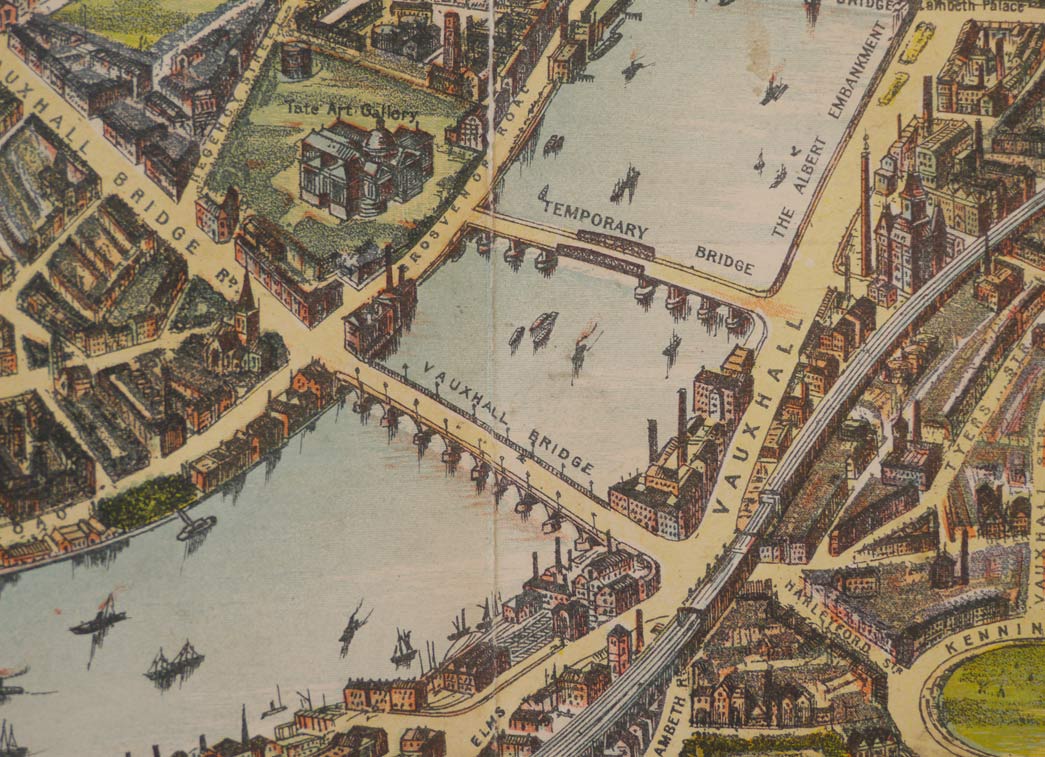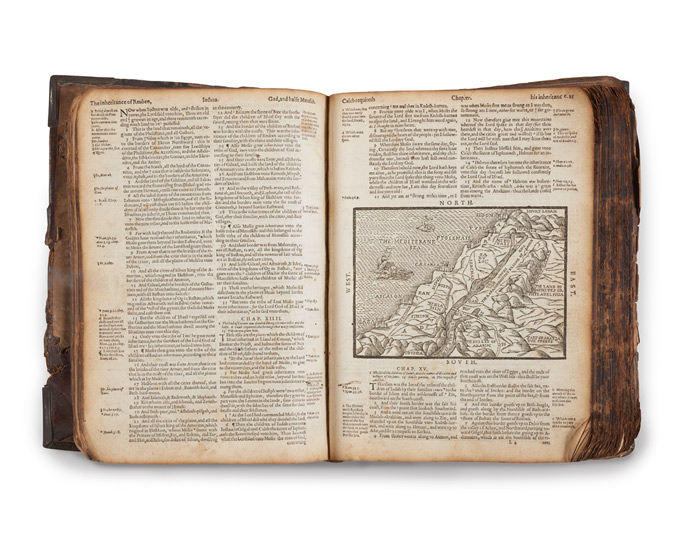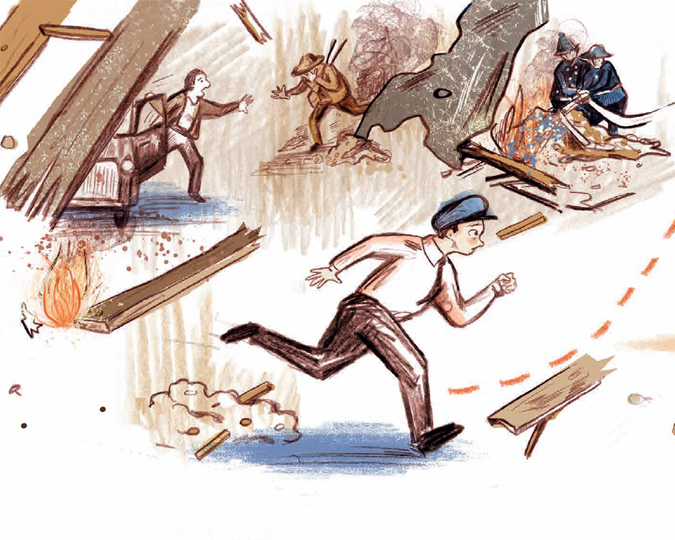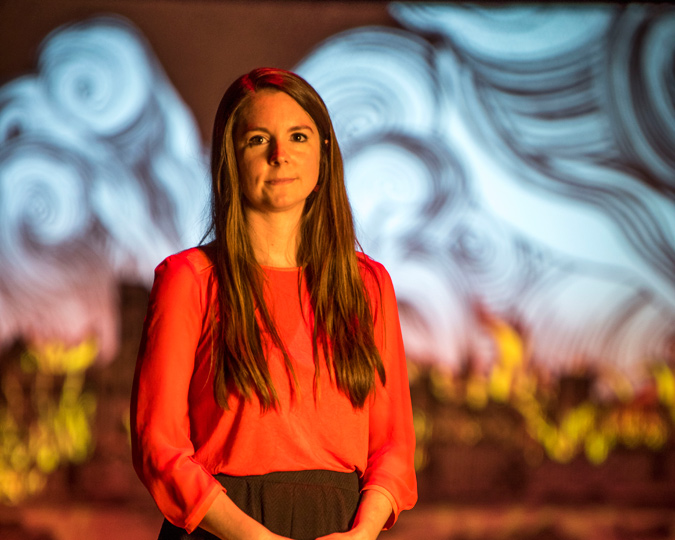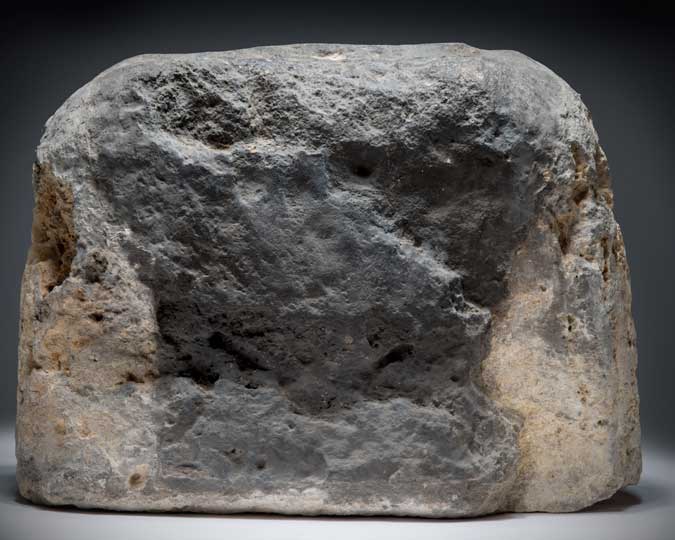In 1976, two museums were brought together to create the Museum of London: the London Museum and the City's Guildhall Museum. This merged not just two museums’ collections but many years of files and records. This complex archive still has some fresh surprises left to discover. Let's hear from John Clark, retired Senior Curator of the medieval collections.
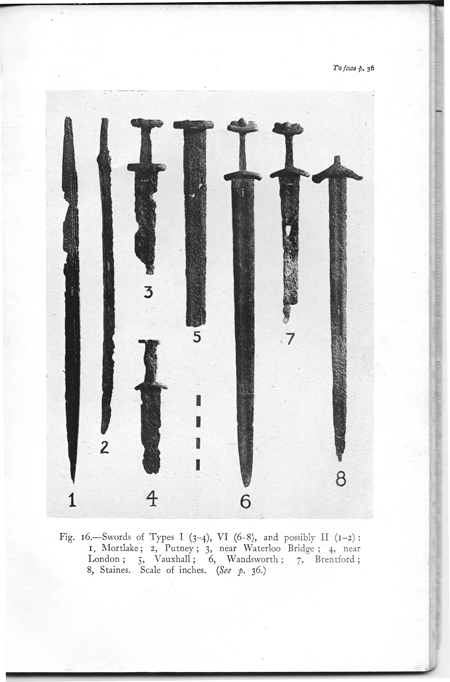
The ‘Vauxhall’ sword (no. 5) alongside other swords found in the Thames
In the London Museum catalogue London and the Vikings (1927)
There’s a rather battered 9th- or 10th-century Anglo-Saxon sword in our collections – incomplete, missing most of its hilt, and in two pieces. It's the sorry-looking number 5 in the accompanying image. It’s not been thought worth putting on public display recently, and has been in store in the museum’s reserve collections for many years. But there are traces of decoration on the hilt, and it must once have been a fine weapon. According to the London Museum’s original accessions register, it was bought in 1914, and came from the Thames at ‘Vauxhall’- one of the many thousands of archaeological objects washed up by the river. The entry provides no more information on the finding of the sword.
However, a handwritten note recording its discovery recently turned up in the museum’s archives – the note had been misplaced, and nobody had looked at it closely for decades. It reveals that the sword was found in July 1897 on the Thames foreshore in front of the Tate Gallery (now Tate Britain) – during the building of ‘Vauxhall Temporary Bridge’. The note, addressed from ‘73 Stamford St S.E.’ and dated 27 May 1899, reads:
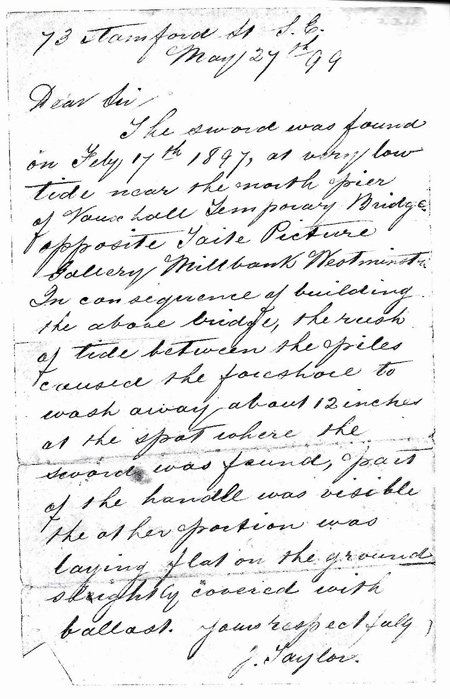
Dear Sir
The
sword was found on July 17
th 1897, at very low tide near the north
pier of Vauxhall Temporary Bridge, opposite Taite Picture Gallery Millbank
Westminster. In consequence of building the above bridge, the rush of tide
between the piles caused the foreshore to wash away about 12 inches at the spot
where the sword was found, part of the handle was visible the other portion was
laying flat on the ground slightly covered with ballast
yours respectfully
J.
Taylor
The 1901 census shows the Taylor family along with two other families (14 people in all) living at 73 Stamford Street, Lambeth – not far from Waterloo Station. Unfortunately there were two ‘J. Taylors’ – the father Joseph, a retired Thames lighterman, and his son, also Joseph, a postman aged 20. But judging by the handwriting it seems likely that the note was written by the son – I don’t imagine a Victorian lighterman would have had much skill at penmanship. Number 73 Stamford Street still exists. It’s part of a terrace of rather fine early 19th-century tall town houses – obviously gone down in the world by 1901 and multi-occupied.
According to
Mr Taylor the sword was found opposite ‘the Taite Picture Gallery Millbank’.
The ‘National Gallery of British Art’, familiarly known from the beginning as
the Tate Gallery, was built on part of the site of the demolished Millbank
prison, to house the art collection donated by the sugar millionaire Henry
Tate. It opened to the public in July
1897 – just a few days after the discovery of the sword, in fact.
But what on earth was the ‘Vauxhall Temporary Bridge’, which according to Joseph Taylor’s note stood in front of the gallery when it opened?
The original bridge across the Thames at Vauxhall opened in 1816. By the 1890s it was in very poor condition, and plans were made to construct a new bridge on the same site. To carry traffic across the river while the old bridge was demolished and the new one built, a temporary structure had to be erected, some 300 yards (270 metres) downstream, in front of the brand new art gallery. This "temporary" structure was in use from 1898 to 1906, as the new bridge took five years longer to complete than expected. It didn’t last long enough to appear on the official Ordnance Survey maps – but a pictorial map of London dating from 1901 in the Museum of London Library shows both the old bridge (recognisable by its tall lamp standards) and the temporary bridge, with its wooden piers and high central girder span. This central span, 165 ft long, had been prefabricated at the Thames Ironworks in Blackwall and floated upriver on a pontoon.
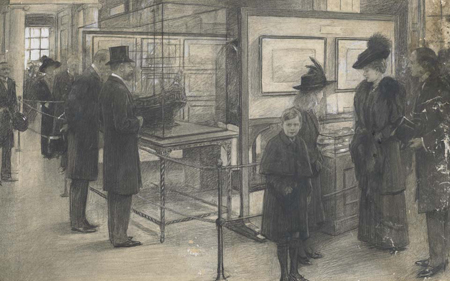
The Royal Family at the inauguration of London Museum, Kensington Palace
1912; ID no. 91.172
By a confusing coincidence, another sword was found at about the same time, during the building of the new Vauxhall Bridge itself. A fine early 11th-century ‘Viking’ sword, it’s now in the Royal Ontario Museum in Toronto, Canada. To add to the confusion, at one time it had actually been on display in the London Museum, the Museum of London's predecessor.
The Viking sword belonged to Sir Guy Laking, who was the first Keeper of the London Museum from its opening in 1912 until 1919. Several items from Laking’s private collection of arms and armour were included on loan in the London Museum displays, until his death in 1919. Among them was this ‘other’ Vauxhall sword, which thus acquired a museum loan number and a temporary London Museum identity. On Laking’s death, it and other items that had been on loan to the museum were returned to his executors and sold at auction.
The London Museum tried to acquire the Viking sword several times over the next decade, finally losing out when it was bought for the Royal Ontario Museum at a Sotheby’s auction in 1928. Thus we have a file of correspondence about the Royal Ontario Museum’s ‘Vauxhall Bridge’ sword – and, to return us to our starting point, that is where Joseph Taylor’s note about the discovery of our own ‘Vauxhall Temporary Bridge’ sword had inadvertently been placed, until I spotted it in the summer of 2016. London has many secrets left to discover - some within the museum's own records!








